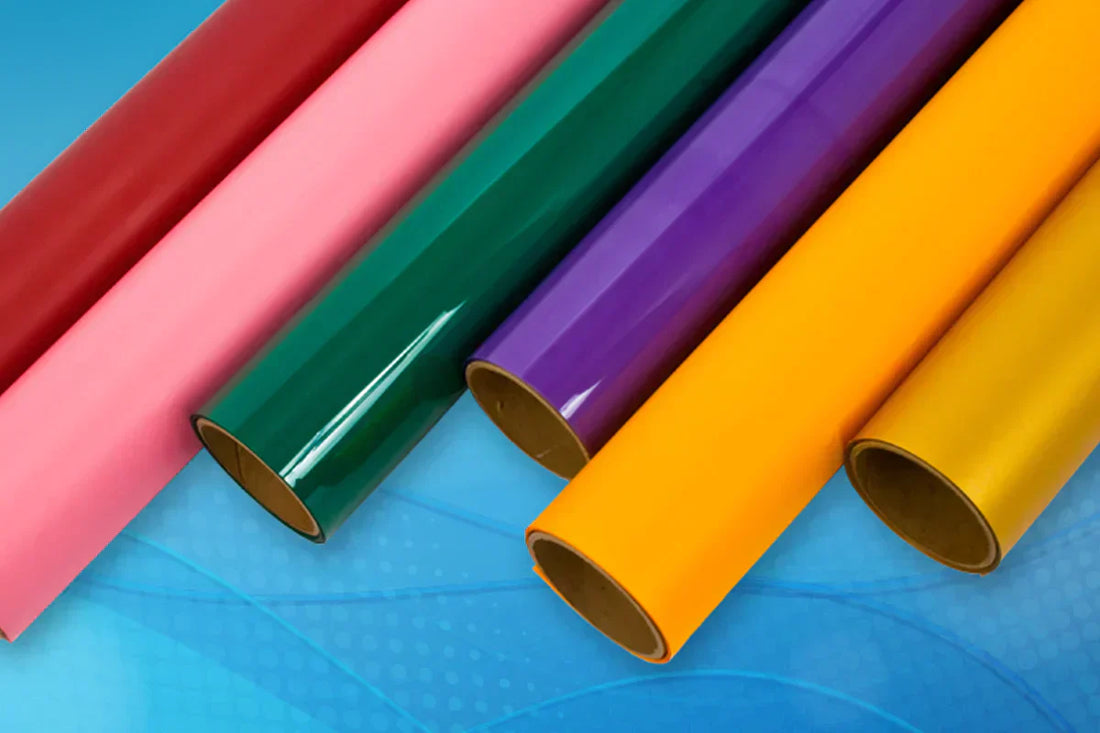
The Comprehensive Guide to HTV (Heat Transfer Vinyl) For Beginners
Share
Heat Transfer Vinyl (HTV) is a material that uses polyurethane-based sheets to print designs on garments, apparel, mugs, and other objects. It can be deemed as a profitable business idea with as little investment, and your supply would be based on your customers' demand, so the possibility of having dead stock is zero.
The market of printing is full of personalized touches where you have to understand the demand of clients. With the minimal skill and resources you can produce some of the best outcomes that customers would happily pay for.
Combined with your creativity and the scope of catering to a wide audience group, printing through HTV cutting machines can easily be your best investment with low risk. To kick things off, let's understand the scope of the market and how the machine works.
What is HTV (Heat Transfer Vinyl)?
So you might have gotten a brief idea about Heat Transfer Vinyl (HTV), which is a heat transfer machine that prints designs through heat on other objects. Mostly it is used on garments, but with the increase in compatibility of other objects, the product lineup can be diversified.
For example, mouse pads, keychains, mugs, socks, tote bags, and so on. The polyurethane-based sheet has heat-activated adhesive at the back, which makes it stick to the surface. And the best part is these sheets are inexpensive, making it a low-investment business idea.

Now let's understand what the resources are that you would be needing to venture into the HTV printing business.
Types of HTV Materials
HTV comes in various types depending on your project needs:
-
Standard HTV: Ideal for cotton and polyester fabrics.
-
Glitter HTV: Adds sparkle—great for fashion and accessories.
-
Flock HTV: Has a suede-like texture, perfect for soft-touch designs.
-
Holographic HTV: Reflects light for a prism-like finish.
-
Metallic HTV: Gives a shiny, mirror-like effect.
-
Stretch HTV: Best for stretchy materials like spandex or activewear.
- Glow-in-the-Dark HTV: A fun option for kids’ clothing or party items.

Requirements for HTV Business
First and foremost, you would need a vinyl cutter; for high definition cutouts and cost-effective time machines, go for the Siser Romeo High Definition Cutter. Alongside you would be needing a weeding tool to remove excessive sheets and get the precision during the process.
Now coming towards the vinyl sheet, it is important to understand that no two sheets are alike; they may differ in quality, thickness, and surface. For example, we have Siser metallic sheet that gives the metallic look on the design, and on the other hand, there is an option for sparkle heat transfer vinyl sheet.
Last but not least, based on the entry-level setup, start with printing designs on apparel and fabrics, as they are easier to work with. Now moving forward, let's understand how printing HTV works.
Begin With HTV
First make a design of your choice and resize it as per your requirement. So the settings on the cutter machine depend upon the thickness and quality of the vinyl sheet, so make sure to run some test cutouts first to avoid wastage.
Place the carrier sheet, which is the shinier side of the vinyl, onto the mat and ensure that the correct temperature is set. Initiate the printing process, and the machine will cut through the sheet. With the help of a weeding hook, remove the excess part of the sheet, and voila!
Your design is ready to be printed, and then use the heat roller or iron to transfer the design onto the garment. It's your choice what you want to use, but make sure the carrier side is facing upwards while doing the heating press. While doing it from the iron, make sure that the temperature is at max, and once it warms, remove the thin plastic sheet.
There you have it: you have set up your very own vinyl printing business. To ensure quality always, wash the cloth after the printing has been done; this will let you know whether the print quality is optimum or not.

Conclusion
Here is the entire guide on how you can set up your HTV printing business with lower investment and minimal skill requirement. Nevertheless, by adding your unique touch and introducing several other product lines, you can easily captivate audiences' attention and boost your visibility.
The best part is this business totally operates on the basis of demand; you don’t essentially have to stock up on raw materials beforehand, making it a best entry-level business idea.
FAQs
Q1. What is HTV anything used for?
Ans. HTV anything is used to turn any HTV (Heat Transfer Vinyl) into a sticker that could be transferred into any object.
Q2. Do HTV cutter machines require maintenance?
Ans. It does require frequent maintenance where you have to clean up the machine and remove excess cutouts, replace the blades and mats with the new ones to ensure precision.
Q3. Are HTV sheet cutouts versatile?
Ans. Yes, HTV printing is a versatile business idea where you can print designs on various surfaces like Mondays, keychains, mugs, socks, pins, and so on. It all depends on your creativity and the availability of resources.
Q4. What is the estimated profit in this ETV printing business?
Ans. Profit entirely depends on the quality of your prints and the uniqueness you are adding. For a T-shirt printing business, your profitability easily ranges around $2-$3 per t-shirt.
